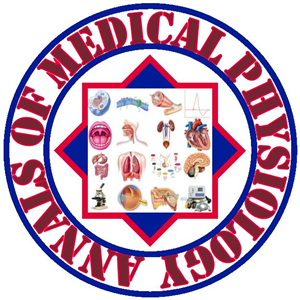Study of intraocular pressure among individuals working on computer screens for long hours
Effect of exposure to computer screens on IOP
DOI:
https://doi.org/10.23921/amp.2017v1i1.263328Keywords:
Computer screens, Intraocular pressure (IOP), Long hours, Schiotz tonometryAbstract
In today’s world computers are ubiquitous and found in different forms which can effect intraocular pressure (IOP). Present study was undertaken to find out effect of day-to-day exposure to computer screen on IOP in normal individuals. 70 individuals (who met the screening conditions and devoid of obvious ocular pathology and systemic diseases) had their IOP’s checked before and 4 hour after computer session on same day, all working in general day shift, involving reading English printed material. The results showed significant (p<0.005) increase with IOP values before exposure being 17.89±3.25 and 16.99±2.84 and after exposure being 19.67±3.4 and 18.70±2.4 in left and right eye respectively. Increase in IOP was noted in 70% and 67% individuals in left and right eye. Differences in IOP of right and left eye may be due to dominance of eye or direction of script from left to right.
Downloads
Metrics
References
Joyce R. Overworked eyes: Will your computer make you go blind? Available from http://www.huffingtonpost.com/robert-joyce-od/eye-strain_b_1591414.html, May 07, 2012 [Last accessed August 01, 2016].
Rechichi C, Scullica L. Trends regarding myopia in video terminal operators. Acta Ophthalmol Scand. 1996 Oct;74(5):493-6.
Cole BL, Maddocks JD, Sharpe K. Effect of VDUs on the eyes: report of a 6-year epidemiological study. Optom Vis Sci. 1996 Aug; 73(8):512-28.
Gradle HS. Tension tolerance. JAMA. 1940 Aug 17; 115(7):495-6.
Weinreb RN, Khaw PT. Primary open-angle glaucoma. Lancet. 2004 May 22; 363(9422):1711-20.
Tai TY, Piltz-Seymour J, Albis-Donado OD, Salim S. IOP and tonometry. Available from http://eyewiki.aao.org/IOP_and_Tonometry, September 30, 2014 [Last accessed August 15, 2016].
United States Department of Labor Occupational Safety and Health Administration. Working safely with video display terminals. Available from https://www.osha.gov/Publications/videoDisplay/videoDisplay.html [Last accessed August 15, 2016].
Beck M. Becoming a squinter nation. Available from http://www.wsj.com/articles/SB10001424052748704868604575433361436276340, August 17, 2010 [Last accessed August 15, 2016].
Bali J, Navin N, Thakur BR. Computer vision syndrome: a study of the knowledge, attitudes and practices in Indian ophthalmologists. Indian J Ophthalmol. 2007 Jul-Aug; 55(4):289-94.
Edema OT, Akwukwuma VV. Asthenopia and use of glasses among visual display terminal (VDT) users. Int J Trop Med. 2010; 5(2):16-19.
Ranasinghe P, Wathurapatha WS, Perera YS, Lamabadusuriya DA, Kulatunga S, Jayawardana N, Katulanda P. Computer vision syndrome among computer office workers in a developing country: an evaluation of prevalence and risk factors. BMC Res Notes. 2016 Mar 9; 9:150.
Bhanderi DJ, Choudhary S, Doshi VG. A community-based study of asthenopia in computer operators. Indian J Ophthalmol. 2008 Jan-Feb; 56(1):51-5.
Akhmadeev RR, Aznabaev MT, Surkova VK, Sagadatova NM. Visual functions in personal computer users: ophthalmic-ergonomic aspects. Vestn Oftalmol. 2001 Jul-Aug; 117(4):52-4. [Article in Russian]
Pekmezci M, Chang ST, Wilson BS, Gordon MO, Bhorade AM. Effect of measurement order between right and left eyes on intraocular pressure measurement. Arch Ophthalmol. 2011 Mar; 129(3):276-81.
Nies?uchowska M. Work with visual display units and its effect on the eye. Klin Oczna. 2007; 109(1-3):30-4. [Article in Polish]
Pas-Wyro?lak A, Wagrowska-Koski E, Jurowski P. Assessment of the impact of the visual work with display monitors on the eye temperature and intraocular pressure. Med Pr. 2010; 61(6):625-33. [Article in Polish]
Reddy SC, Low CK, Lim YP, Low LL, Mardina F, Nursaleha MP. Computer vision syndrome: a study of knowledge and practices in university students. Nepal J Ophthalmol. 2013 Jul-Dec; 5(2): 161-8.
Khurana AK. Asthenopia, anamolies of accommodation and convergence. In: Theory and practice of optics and refraction. 3rd ed. New Delhi, India: Elsevier, 2013: 86-112.

Published
How to Cite
License
Copyright (c) 2017 Quench Academy of Medical Education and Research (QAMER)

This work is licensed under a Creative Commons Attribution 4.0 International License.
The authors warrants and represents that the submitted MANUSCRIPT is an original work and has not been published before in any form, and that it does not infringe upon any copyright or other right(s), that it does not contain infringing, libelous, obscene or other unlawful matter, that he/she is the sole and exclusive owner of the rights here-in conveyed to the Publisher, and that he/she has obtained the customary permission from the copyright owner or his legal representative whenever a text/passage from copyrighted material is quoted or a table or illustration from such material is used. The Author(s) will indemnify the Publisher for, and hold the Publisher harmless from any loss, expense or damage occasioned by any claim or suit by a third party for copyright infringement or arising out of any breach of the foregoing warranties as a result of publication of the Article. The Article shall be delivered to the Publisher free of copyright charges. In the event that the Article is not accepted and published by Publisher, this agreement becomes null and void.
Sherpa/Romeo publisher policy can be viewed at Annals of Medical Physiology - Sherpa/Romeo Policy
Plum X metrics
Article level metrics are shown here









